Ready Player One: The missed opportunity that's a hell of a lot of fun
The novel adaptation "Ready Player One" is the latest film from director Steven Spielberg. It offers plenty of spectacle and promises a feast for film and game nerds. It fulfils its promise, but lacks the courage to dare to do something out of the ordinary.
With "Ready Player One", Steven Spielberg is attempting a film adaptation of Ernest Cline's novel of the same name: A story set in a virtual world about the hunt for Easter Eggs - hidden treasures in video games - peppered with an insane amount of 1980s pop culture references and the promise of gaining control over the future of humanity.
Apropos: "Ready Player One" is most fun when you enjoy it as unencumbered as possible. That's why you won't learn anything here that isn't already clear from the final trailer.
And that's the point
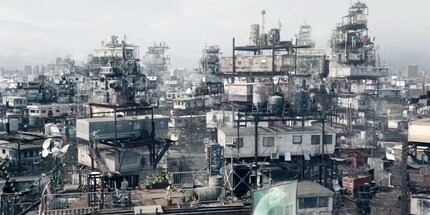
Source: Warner Bros. Switzerland
Columbus, Ohio, 2040: The world is on the brink. Humanity has exploited it, hunger and poverty dominate everyday life. It is a world in which people have long since given up on solving problems. Instead, they simply put up with them.
The Oasis - a virtual reality the size of half a galaxy - is the place where people now live. Here, everyone can be whoever they want and do whatever they want. There are jobs and schools, cinemas and sports centres. You can go to the beach, climb Mount Everest with Batman and ski on the pyramids of Giza. And best of all: it's free.
Then James Halliday (Mark Rylance), the inventor of the Oasis, dies. Shortly before his death, he bequeathed one last great game to mankind: the hunt for the Easter Egg. This can only be found by those who complete three seemingly impossible tasks and receive three magical keys as a reward. In the best Halliday style, the clues that lead to the keys are hidden in his enthusiasm for the 1980s.
The highlight: whoever finds the Easter egg first will inherit Halliday's billion-dollar fortune and control of the Oasis. This unleashes evil forces driven by greed. Five years after Halliday's death, in the year 2045, it is the young Wade Watts, alias Parzival (Tye Sheridan), who is finally able to decipher the first clue. The hunt for the future of humanity begins.
The world of virtual worlds
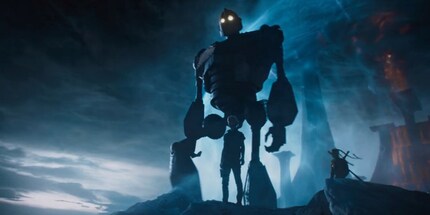
Source: Warner Bros. Switzerland
"Ready Player One" is a furious rollercoaster ride in a virtual reality that is unrivalled. Expectations were certainly high. After all, Spielberg is returning to the adventure genre with fantastic elements that he himself pioneered with films such as "E.T.", "The Goonies" or "Jurassic Park". He probably doesn't add his best work with "Ready Player One", but it's a worthy addition.
Nobody would have bet blindly on its success. More than half of the film's 140-minute running time takes place in the Oasis, which was created entirely on a computer. Similar to James Cameron's "Avatar", the viewer is supposed to make friends with and identify with computer-animated characters - no easy feat. Just like Gollum in "Lord of the Rings", motion capture technology was used to transfer the performance of real actors to a computer model.
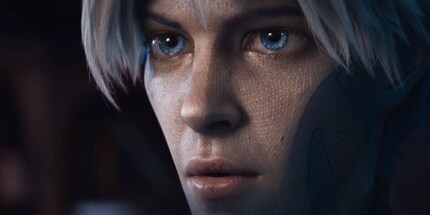
Source: Warner Bros. Switzerland
The maths worked out. Judging by the trailer, the look of the film still seemed a little artificial - that would have quickly led to an emotional distance. But the setting is breathtaking, the worlds you visit in the course of "Ready Player One" are elaborated down to the smallest detail and refer to well-known and less well-known films, series and games from the 1980s and 1990s, such as "Akira", "Gundam" or "Space Invaders".
Skilful: As in the original novel, the story is told from Parzival's sympathetic point of view. This allows him to take the audience by the hand and explain what's going on to those who don't know.
Most of the time, anyway.
When characters from Blizzard's "Overwatch" or multiple Master Chiefs from "Halo" scurry briefly through the picture, the hearts of fans of the later two thousand years will also beat faster. But they are anachronisms that stand quite alone in the neighbourhood.
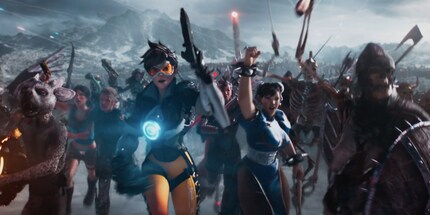
Source: Warner Bros. Switzerland
Of course, nostalgia plays a huge, almost omnipresent role. But in a positive sense. Sometimes Spielberg even quotes himself. One example: When Parzival dodges the ravenous T-Rex in his DeLorean, no one can help but grin with amusement because:
- Parzival is named after the Knight of the Round Table who finds the Holy Grail. Kind of an Easter egg too
- The DeLorean comes from "Back to the Future", where Spielberg was an executive producer
- The T-Rex is from "Jurassic Park", one of Spielberg's biggest cinema successes
But as I said - we won't give any more away at this point.
Something tangible: What are the actors like?
Spielberg has chosen a more traditional narrative structure for "Ready Player One". In other words: Good and evil are clearly separated from each other. In Ben Mendelsohn, he has found an actor who fits the role of the nasty and unscrupulous Nolan Sorrento perfectly. Sorrento is the leader of the techno-corporation Interactive Online Industries - IOI for short - and has been trying to take control of the Oasis since Halliday was alive. He realises that whoever controls the Oasis controls the future of humanity.
This also justifies walking over dead bodies.
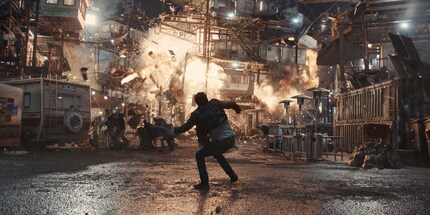
Source: Warner Bros. Switzerland
Mendelsohn plays the cynical CEO who is fed up with all the nerdiness. It's great that he doesn't just seem evil because reasons. The fact that company bosses don't give a damn about the common good when it comes to multiplying their own profits is not a new concept. In every scene, Mendelsohn's character is fiercely determined and will stop at nothing. A quality that already characterises him as Orson Krennic in "Rogue One: A Star Wars Story".
Mark Rylance also plays James Halliday in such a way that the viewer immediately realises that he would rather be in his self-created virtual reality. Instead, he is turned into a tech deity and legend by billions of nerd disciples. Halliday has a slightly odd sense of humour, as evidenced by his Easter Egg scavenger hunt, but a benevolent heart.
Tye Sheridan recently caught the eye as Scott Summers in "X-Men: Apocalypse", and can now play first fiddle as Wade Watts / Parzival for the first time in a blockbuster. But you don't really want to believe him as the nerd who rises from nobody to worldwide fame. His portrayal is too cool and hard-boiled. But that doesn't make him unsympathetic, and he fulfils his purpose - to explain to the audience how Oasis and its virtual reality work - satisfactorily.
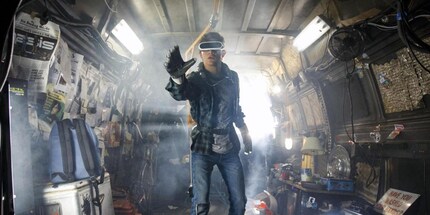
Source: Warner Bros. Switzerland
His female counterpart, Olivia Cooke as Art3mis, comes across all the better. She is snotty but radiates honesty. She is also Parzival's main driving force when it comes to advancing the Easter Egg quest, not for her own benefit but for that of humanity. However, their cosy little romance feels a little stilted and is nerd-wish fulfilment of the highest order.
Apropos: there is still the book
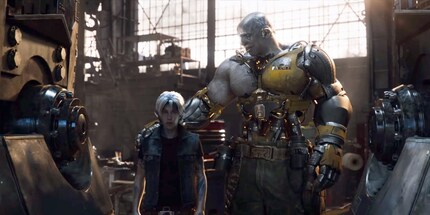
Source: Warner Bros. Switzerland
Spielberg has taken a few liberties in the adaptation. A lot, in fact. Book connoisseurs will quickly realise: In terms of content, the film has little to do with its original. The advantage is that the film also has a few surprises in store for book readers. On the other hand, there isn't as much puzzling and solving in the film as there is in the book. This also means that some of the cleverness is lost, as Spielberg's tasks are usually simply the hook for the next big action sequence. On the other hand - do you remember the puzzles from "The DaVinci Code" or "Angels and Demons"? They may be thrilling to read in book form, but in film they come across as a bit meagre. Spielberg prefers to let off steam on a visual level, firing from all cylinders. Perhaps that's for the best.
There is practically no social criticism, which book author Ernest Cline skilfully wove into his version of the story. One example: In the book, Parzival is initially incredibly proud of his equipment including a treadmill, lifting crane, haptic suit and VR goggles. He even has a device that can imitate scents. Then he realises that every single component is part of the symbolic prison cell in which he has voluntarily locked himself up. Because he is actually lonely, has no human contact and is wasting his life on a better video game.
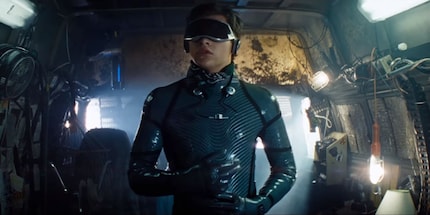
Source: Warner Bros. Switzerland
It is precisely these critical undertones that make the book not only entertaining, but also relevant, thanks to their subtle but targeted use. Also thanks to extensive dips into the nostalgia of 1980s pop culture.
This is missing from Spielberg's version. Admittedly, in the final third, even Halliday's virtual face admits that reality, as terrifying and painful as it may seem, is the only place where you can have a decent meal. It's a charming way of putting it, and is intended to make the viewer realise, with a wink, that you don't think all this virtual stuff is somehow unreservedly super. And all this while you're sitting in your cinema seat watching computer-created characters. Do you recognise the irony?
But that's not enough compared to the original. Far too little.
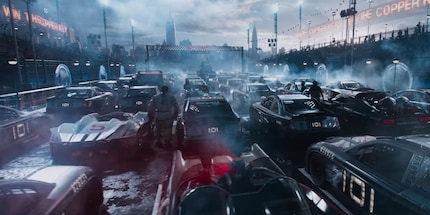
Source: Warner Bros. Switzerland
Big plus: The makers around Spielberg and his regular screenwriter Zak Penn have remained particularly faithful to the spirit of the book. Especially when it comes to planting allusions and cross-references to the hodgepodge of games and film culture of the 1980s. It's impossible to discover all the hidden Easter eggs (ha! irony!) when watching the film for the first time. This qualifies "Ready Player One" for a second or third viewing.
Conclusion: A missed opportunity that is a lot of fun
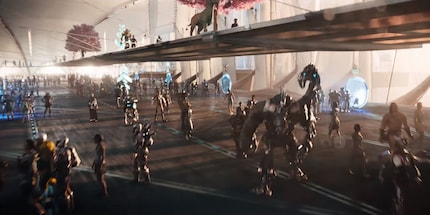
Source: Warner Bros. Switzerland
"Ready Player One" is a double-edged sword. It offers more than enough spectacle. And thanks to the large dose of nostalgia, it's hard to get rid of the big grin on your face.
But then the film comes to an end, and apart from a lot of fun, it hasn't really delivered much more. The topic of virtual reality offers more than enough to discuss. Both positive and negative. Ernest Cline has recognised and addressed this in his book. "Ready Player One", the film, doesn't care. Either Spielberg lacks the courage to add a dose of seriousness to the fun - or he simply wasn't interested.
A missed opportunity.
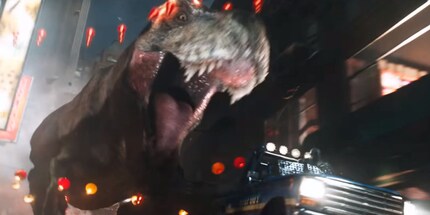
Source: Warner Bros. Switzerland
But what remains is the magnificent bombast and a masterly achievement in the visual realisation of Oasis. The characters are likeable across the board and rarely boring. It's simply a hell of a lot of fun to watch "Ready Player One". You can confidently watch the film three, four or sixteen times - you still won't manage to discover all the Easter eggs. The sheer number of references and allusions across 1980s pop culture is overwhelming.
Therefore: Go, see it!
Or, to paraphrase James Halliday: "Players, are you ready?"
I write about technology as if it were cinema, and about films as if they were real life. Between bits and blockbusters, I’m after stories that move people, not just generate clicks. And yes – sometimes I listen to film scores louder than I probably should.
From the latest iPhone to the return of 80s fashion. The editorial team will help you make sense of it all.
Show all